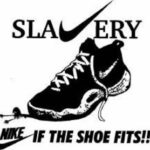If you were mention labor unions most people will have an opinion, be it negative or positive, about U. S. labor organizations. Some people would get images of employees picketing loudly outside their places of employment. Others would think of fair wages and safe working conditions. What are labor unions? How long have they been around? What laws protect unions? Why have union memberships declined in recent years?
According to Supervisory Management: The Art of Empowering and Developing People by Mosley, Megginson, and Pierti they are “…an organization of workers banded together to achieve economic goals.” These goals include, but are not limited to increased wages and benefits, shorter working hours, improved working conditions, and both personal and job security. Basically labor unions are organized groups of employees who work together to keep their employer from taking advantage of them.
There are two different types of labor unions. Craft unions are for workers in a certain skill, craft or trade such as carpenters or masons. These types of unions have been around since the late 1700’s,. Industrial unions are made up of all the workers in an industry, for example the American Union of Postal Workers. Industrial unions started popping up around the mid 1930’s after several laws were passed to help protect employees from being exploited by employers.
Let’s take a look at these laws. The first one was the Railway Labor Act of 1926. This was originally passed to avoid service from being interrupted because of disputes between railroads and their unions. The RLA created two procedures to handle this problem. First was the National Mediation Board who resolves negotiation. The board is also responsible for holding a secret-ballot election to see if the employees want a union. Second was the National Railway Adjustment Board which was designed to handle grievances and arbitration disputes that come up during the life of an agreement.
The next law passed was the Norris-LaGuardia Act, or Anti-Injunction Act, of 1932. This act prevents employers from filing an injunction against the union preventing them from peaceful picketing, boycotts, or various striking activities. Before this was passed federal court injunctions were powerful antiunion weapon. These injunctions forced labor unions to either stop activities or face being held in contempt of court.
The Wagner Act of 1935 (or National Labor Relations Act) has by far had the biggest impact on union-management relations. This placed the protective power of the federal government firmly behind employee efforts to organize and bargain collectively through representatives that they chose. This act created the National Labor Relations Board. The NLRB governs labor relations in the United States. This act was later amended by the Taft-Hartley Act (or the Labor-Management Relations Act) of 1947. Basically this act balanced the rights and duties of labor and management in the bargaining arena.
In 1959 the Landrum-Griffin Act (or the Labor-Management Reporting and Disclosure Act) was passed by Congress to protect union member rights and prevent racketeering and other unethical practices by employers and union officers. The most important part of this act is the Bill of Rights of Union Members. These rights are as follows: (1) nominate candidates for union office, (2) vote in union elections or referendums, (3) attend union meetings, and (4) participate in union meetings and vote on union business. Also, this act requires the union to submit financial reports to the Secretary of Labor and for employers to report any expenditures that are made in exercising their bargaining rights.
In 1945 union member ship was at an all time high. However, shortly after membership began to decline. One of the major reasons is the shift from manufacturing jobs, where workers are easy to unionize, to service workers, which are much more difficult. Service workers are more educated and technically oriented.
Another problem for unions in the United States is the growing global economy. In order to compete globally U. S. firms have to cut costs. In order to help cut costs employers have become more aggressive in opposing union organizing drives. They are less able to compete globally if they are held under the constraints of union employees.
A growing trend in part time and temporary employees has also caused a decline in labor unions. The number of part time employees is over 20 million and telecommuters, employees who work from home, and the self employed number over 52 million. These workers are difficult to organize since they are not as involved in the day to day operation of a company.
The growing number of small businesses is also hurting union membership. Small businesses provide the majority of new jobs these days. It is very hard to start a union when your employee base consists of only five people.
Finally, the decline in union membership is directly because of actions of unions. Many laws have been passed to protect employees. These were laws that unions themselves pushed to have passed. You could almost say that unions have worked themselves out of usefulness.





